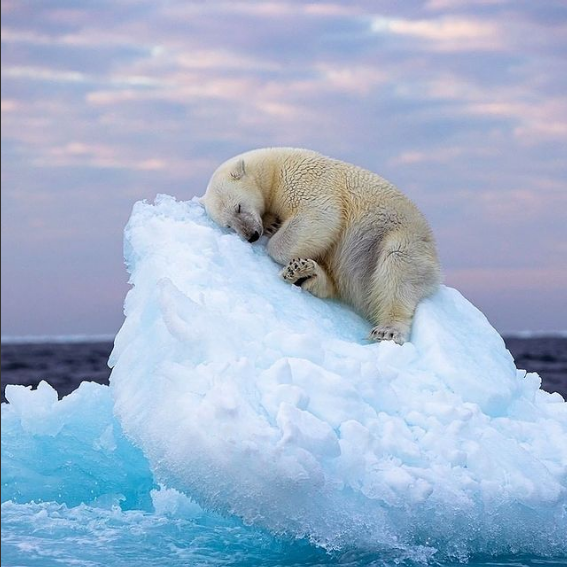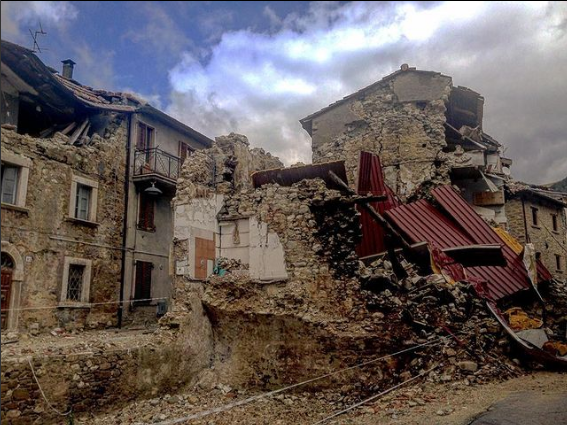How Earthquakes are Formed-Earthquakes and Global Warming: With talks about climate change and global warming hitting an all time high and the seeming increase in the number of earthquakes that make headlines every year, one might think that these two phenomena are related. As one sad little cartoon donkey said, “Today is a good day for an earthquake”. Is there such a thing as earthquake weather? Do climate change and global warming affect the terrifying shaking you can feel across the globe? These are questions on everyone’s mind. We’re here to help. This article will tell you everything you need to know about if earthquakes and global warming are actually related.
Earthquakes: What Are They?-How Earthquakes are Formed-Earthquakes and Global Warming
Before we get to earthquake weather and if earthquakes are related to global warming, we should probably make sure we’re all clear on what earthquakes are. Yeah. You know if you feel one. The earth starts shaking, you hear rattling. You might even know to get in a doorframe or under a sturdy desk until the shaking is over to protect yourself from any falling debris. However, do you know the science behind earthquakes?
Well, the simplest definition is the most commonly known one which we’ve already covered a bit. An earthquake is an often sudden shaking that, when strong enough, is felt by all of us on the earth’s surface. They can happen on dry land or under the sea floor. This shaking is actually called a seismic wave, or, rather, a succession of multiple seismic waves.
Earthquakes are a common occurrence that happen every day, but we don’t always know when or where they’re occurring. It’s also hard to register how strong an earthquake is just by experience or by measuring damage. An earthquake that hits a developing country or a city that is made up of mostly older buildings may cause more damage than an earthquake that hits a city that has reinforced buildings, strong buildings, even if it’s not as strong. How do we measure them then? Similarly to storms, a scale is in place to measure the strength of an earthquake.
Richter Scale and Earthquakes-How Earthquakes are Formed-Earthquakes and Global Warming
The scale used to measure the strength of an earthquake is called the Richter scale, it works by measuring how much energy is released by an earthquake and it’s been the gold standard for earthquake strength measurement since the 1930s. The scale goes from around 1-10, generally, and the breakdown goes like this:
Earthquakes below a 2.9 are considered micro and are typically unnoticed by humans. These are the most frequent types of earthquakes with multiple happening every day without effect.
Earthquakes from 3 to 3.9 are minor, they’re also very common and can often be felt, however, they’re usually quick and don’t cause damage. It would be similar to being near a demolition site or maybe a really impressive fireworks show.
Earthquakes from 4 to 4.9 are light. If you’re in an area where a light earthquake hits, you’re going to feel it. Upwards of 12000 of these earthquakes happen every year, but they usually don’t cause any damage, they’re just a little unnerving.
Earthquakes from 5 to 5.9 are moderate. Here you’re starting to get to the earthquakes that might cause a little damage. There are fewer of these every year compared to previously rated earthquakes, but there are still multiples a day in particularly active years. While some weak buildings may have damage, these usually aren’t the earthquakes that cause people to worry.
Strong Earthquakes
Earthquakes from 6 to 6.9 are considered strong. With often less than 200 strong earthquakes every year, this level of tremor is something to be concerned about. At this point you’ll want to make sure your building is fairly prepared for earthquakes to keep from suffering much damage.
Earthquakes from 7 to 7.9 are considered major. First the good news, these earthquakes are pretty rare. If you consider how many fault lines there are in the world and the statistics that the number of major earthquakes registered every year averages at less than 50, you probably don’t have to worry about one hitting. However, you might want to be prepared. This sort of earthquake will likely cause a lot of widespread damage where it hits.
Earthquakes from 8 to at least 10 (many scales cap out at 10, however most scientists would agree that there is, in theory, no limit to how strong an earthquake could be) are considered great. Great as in catastrophic. These earthquakes are particularly rare, so you can breathe a sigh of relief, but they’re a force to be reckoned with. Great earthquakes have the possibility of decimating large areas and even causing changes to landscapes. You can try to prepare for this type of earthquake, but it’s unclear how much you can really be ready for one this strong.
Earthquakes: What Causes Them?-How Earthquakes are Formed-Earthquakes and Global Warming
Now we’re getting to the really scientific stuff. Earthquakes may seem random, but they don’t just come out of nowhere without cause. Under the earth’s surface there are these things called tectonic plates, not, not like dinner plates. Tectonic plates is basically just an official term for giant chunks of rock that are in the earth. These plates, however, aren’t just solidly in place, they move around. Constantly. Sometimes, when they move, they bump into each other or shift and the result is what we call an earthquake.
You might have heard of fault lines? That’s the “line” in the earth where one tectonic plate ends and another begins and the space between them.
That’s the main cause of earthquakes, but it’s not the only one.
For people who don’t live in places with many active volcanoes, it may be a surprise to learn that volcanoes and earthquakes are actually quite closely linked. Actually, volcanic eruption is another main cause of earthquakes around the world. Often you’ll hear about earthquakes, minor or major, occurring in an area just before a local volcano erupts or has some activity. Yellowstone National Park is a good example of this. The entire park is one big volcano, but within it there are numerous geysers which are quite active. This is a sort of low level eruption, these geysers operate using the same principles as volcanoes, after all. You know what is also a fairly common occurrence in Yellowstone? Earthquakes. Not large ones, in fact, most volcanoes that happen every day are too small to be felt by humans.
Other Causes of Earthquakes- -How Earthquakes are Formed-Earthquakes and Global Warming
While those are the two biggest causes of earthquakes, there are a few others we’ll quickly run through here.
There are some ways humans can cause earthquakes. I know, I know, it seems like our species is always getting into trouble, but that’s what happens when we do so much activity that goes against or tries to harness things in nature. It’s been seen that mining, nuclear bombs, and water dams can cause earthquakes. They may be uncommon, it would take a lot of external force to disturb the earth’s balance enough to cause tremors, but it’s possible. Whether by creating shockwaves that cause tectonic shifts or removing rock to aggravate fault lines, humans are capable of causing earthquakes.
There are other rare occurrences that can, sometimes, cause earthquakes if the right combination of elements mix together at once. Landslides, avalanches, anything that involves large scale displacement of rock, snow, or earth, has the potential to create waves that force the earth to move under our feet (Hey, the song doesn’t lie!).
Global Warming: What Is It?
Global warming is defined as the rise in the earth’s temperature over the course of time. This is due to greenhouse gases which accumulate in the earth’s atmosphere and trap in the sun’s heat. That may not seem that bad, but it is. Every ecosystem on earth is based on a delicate balance, at the base of which is the earth’s atmosphere and everything it controls, from the temperature to the amount of rain or snow or sun a place can expect. If something in that balance changes, it causes a ripple effect that can cause mass changes. If earth were an uninhabited planet it wouldn’t be an issue. However, there are countless species of plants and animals on the earth, and let’s not forget we live here, too! So, large-scale changes to the earth can wreak havoc on the lives of all the creatures that call this planet home.
Even though it’s not the exact topic of this article, it’s also worth noting that, while global warming isn’t the same thing as climate change, the two terms are related, which is why you often hear them used interchangeably (Even though that is often incorrect!). Global warming is, however, one of the causes of climate change.
Global Warming: What Causes It?-How Earthquakes are Formed-Earthquakes and Global Warming

As we touched on above, global warming is caused by greenhouse gases which are often naturally occurring gases that are released into the atmosphere in quantities that are too large to dissipate quickly usually due to human activities. These gases, in fact, cause something called the “greenhouse effect”. They create a sort of barrier that doesn’t allow the sun’s heat to be released, so, instead it keeps the earth’s atmosphere warm, which is good, until it doesn’t just maintain the earth’s overall temperature, it raises it.
Greenhouse Gases
What are the greenhouse gases? Well, some of them you’ve probably heart of, but, here’s the list of the most commonly occurring greenhouse gases, if you’re curious:
Water Vapor;
Carbon Dioxide;
Methane;
Ozone;
Nitrous Oxide;
Chlorofluorocarbons.
There are others, the list is a whopping 18 items long, but these are the main ones to be concerned about, so we won’t clog your brain with a bunch of long and complicated scientific words that you don’t need to know.
Now, these gases are all naturally a part of the earth and its atmosphere and, if the only release of these gases were caused by naturally occurring events without any human influence, the earth’s atmosphere would generally be able to process these gases in a way that didn’t allow them to accumulate much. Over great spans of time, we’re talking about thousands of years, there would be some accumulation that would, eventually, lead to a warming effect, but this would be a very gradual process.
Instead, man-made phenomena such as industrialization, increase in factories and factory farming, deforestation, etc. all cause an increase in the creation and release of these major culprits of global warming. Due to this increase, the atmosphere isn’t able to handle the amount of gases being released and can’t process them fast enough to prevent their greenhouse effect. This causes the temperature of the earth to slowly but steadily rise. Even the smallest rise in temperature is enough to throw off the careful balance that allows life to thrive on earth.
Earthquakes and Global Warming: Is There a Connection?-How Earthquakes are Formed-Earthquakes and Global Warming
So, we finally get to the crux of the matter. Is there a connection between global warming and earthquakes? One would think so, right? Climate change and global warming seem to affect everything on earth. Why wouldn’t it affect the inner workings of the earth as well?
Well, it depends on who you ask. Rather, it depends on how you ask it. Is there a direct correlation between global warming and the tectonic plates which cause earthquakes? No. That may come as a surprise, but no matter how warm or cold the planet is, the earth’s plates will still move the same way. Volcanoes will still erupt. All the major causes of earthquakes will go unaffected. So, you can take a deep breath about that. At least an increase in earthquakes isn’t a direct result of global warming that we have to worry about.
You may think you’re done reading, but we’re not done yet. We gave you the simple answer, sure. Humans can’t create earthquakes by messing with the climate, but there’s still more to learn about this argument you don’t want to miss, so keep reading.
Do Humans Directly Cause Earthquakes?- How Earthquakes are Formed-Earthquakes and Global Warming
Okay, so humans can’t directly cause earthquakes. That’s great news! Right? Well, before you go celebrating already, remember that volcanic eruptions, tectonic plates, and the fault lines (all of which can’t really be affected directly by humans or by climate change) aren’t the only causes of earthquakes. Avalanches and landslides can potentially create large enough shock waves to trigger the earth to tremor.
You know what can cause those events? The weather. Torrential rains can increase the likelihood of landslides, especially in areas that have suffered from deforestation, either directly because of humans cutting down trees or because of forest fires. If an area is not typically supposed to get rain, the earth may not be equipped to absorb large amounts of water which can cause land and mudslides.
Rain and Global Warming- How Earthquakes are Formed-Earthquakes and Global Warming
You may be saying that rain isn’t necessarily related to global warming. Remember how we said global warming and climate change are related? Well, an increase in torrential rains, particularly in areas where that is not the typical weather is an example of radically changing climates which are, at least in part, caused by global warming. Avalanches follow much the same logic. If snow starts to melt or is displaced by a change in the climate, that could trigger an avalanche to occur. In both these cases, if there’s enough force to create a shock wave, an earthquake could be an unwelcome side effect of these already dangerous phenomena. Also, in both these cases, global warming and climate change could be to blame, at least partially.
Strong storms could also affect fault lines. While this isn’t confirmed yet, it’s been theorized that strong weather events may be able to do just enough to shift the tectonic plates and trigger an earthquake. By strong weather events, we don’t just mean a bad storm, we mean business. Extremely dangerous and record breaking tornadoes and hurricanes, the likes of which wouldn’t have been conceivable decades ago. At that point they were maybe once in a lifetime events. In that case, the storms likely wouldn’t do much harm. A singular event, however strong, would be less likely to have enough force to trigger an earthquake.
Change from Once in Lifetime Occurrence- How Earthquakes are Formed-Earthquakes and Global Warming
However, with global warming and climate change, we’ve started to see an increase in the number of these sorts of weather events. More and more are happening every year. It’s now no longer a once in a lifetime thing to hear about a devastating storm, it’s more like a yearly occurrence. That many strong storms happening in similar places, as they seem to, year after year could be enough to cause tectonic plates to shift just enough to cause an earthquake to happen.
Like we said, that’s just a theory, however, it makes sense, if you think about it. I mean, there do seem to be more earthquakes. This isn’t just an issue of the news being more international now, 20 years ago we were still hearing about what happened across the globe and it didn’t seem like there were this many cases of the earth shaking a city or country to its core like today. It truly does feel like there are more earthquakes now than there were in past decades. So, if this theory were to prove true, then, while the main causes of earthquakes aren’t affected by global warming, the “minor” earthquake triggers could very well be influenced by global warming and climate changes.
It’s a scary prospect, but try not to panic. Scientists aren’t in agreement on the likelihood of this theory. Many still hold firm on the stance that global warming and earthquakes aren’t related. There may be a correlation in the increase in frequency, but, according to official reports, that can just be chalked up to being an unfortunate coincidence.
Fighting Climate Change and Global Warming-How Earthquakes are Formed-Earthquakes and Global Warming
If you’re more in the camp of thinking that there are too many things lining up for it to just be by chance, then there are things you can do. Get onboard the train to help fight climate change. Call your local politicians if you can. Go to a protest. Try to be more eco-conscious and sustainable yourself. Figure out what the biggest contributors to global warming are and do what you can to avoid them. There’s something you can do.
In the meantime, maybe this article reminded you that you live on or near a fault line, or maybe you’ve felt some earthquakes yourself in the past decade. Well, if you don’t know if you’re at greater risk for feeling an earthquake, what better time to find out than now! If you’re not, then you can likely breathe easy. Just have a general emergency supply kit and have a plan in place for any natural or non-natural disasters that may strike so, in a crisis, you’ll know what to do. If you do live on a fault line, we recommend you look into seeing if your home is earthquake proof. While you may not be covered if a quake that scores a 10 on the Richter scale hits, you’ll probably be covered for most earthquakes you’d be likely to feel.
Conclusion
How Earthquakes are Formed-Earthquakes and Global Warming
It may feel daunting, we don’t blame you! You don’t have to worry, though. You have options and, likely, some time. While it’s good to be concerned about things like earthquakes, don’t let it take over your life, especially if you don’t live in California where the big one is supposed to hit! (We’re joking! Mostly.)
Honestly, the main concern is climate change and global warming. That’s the biggest monster to face, and there are things that can be done to help mitigate the risks of a worst-case scenario. If everyone, and we mean everyone, works together to help. As far as the global warming and earthquake connection, though? We think it’s possible that the theory that strong storms can increase the likelihood of earthquakes is true, but we also think earthquakes caused by those events are pretty rare. In general, we’re inclined to believe the majority of scientists. Global warming and earthquakes aren’t all that related. At least that’s a relief!
Recommended Reads
- Climate Variability and Climate Change- What is the Difference?
- How Many Oceans Are There in the World?
- What Causes Seasickness and How to Avoid It-Travel Guide
- Should You Book an Airbnb That Requires a Security Deposit?
- Climate for Tropical Rainforest: All You Need to Know
- Best Winter Coats for Women


